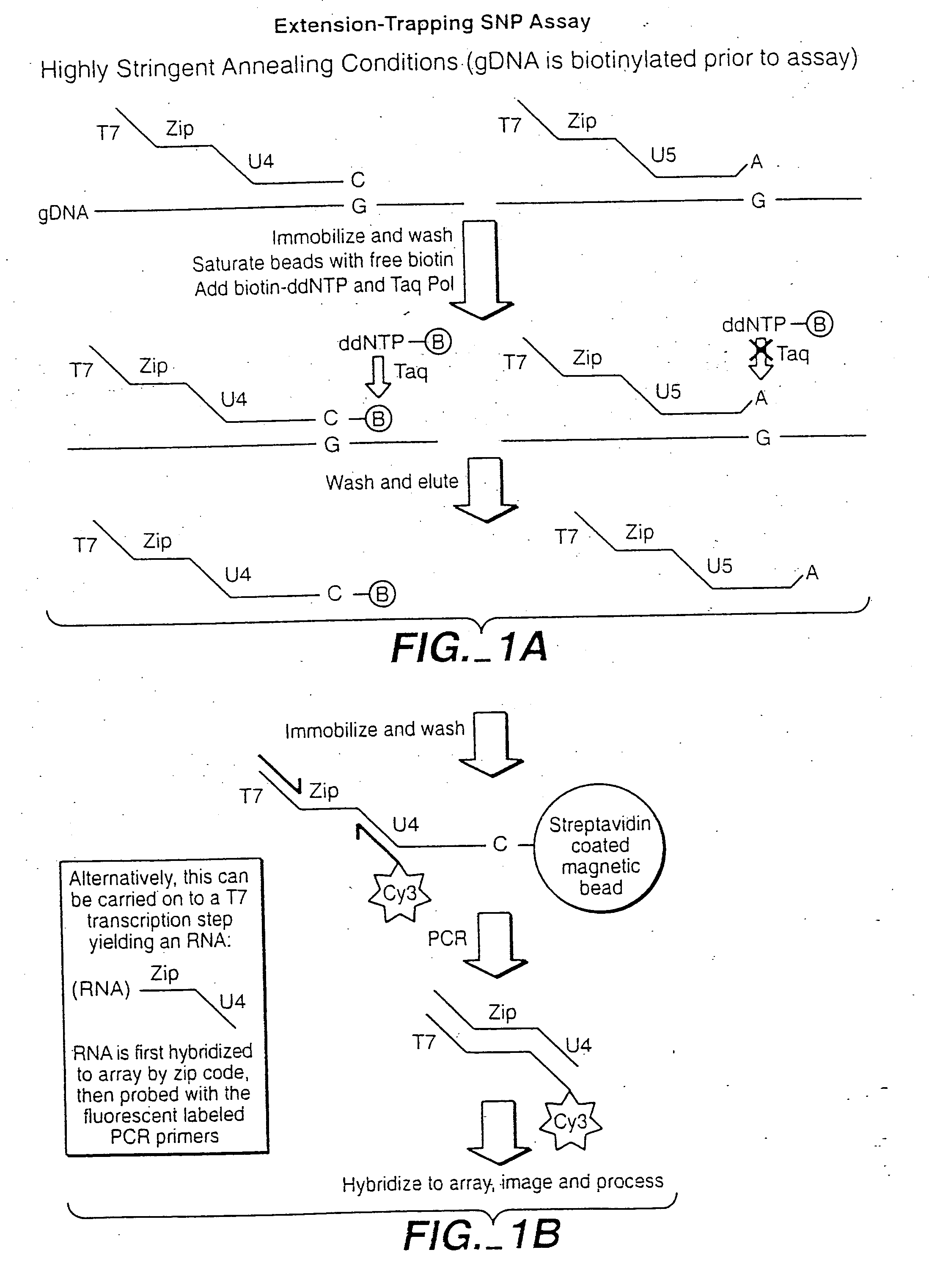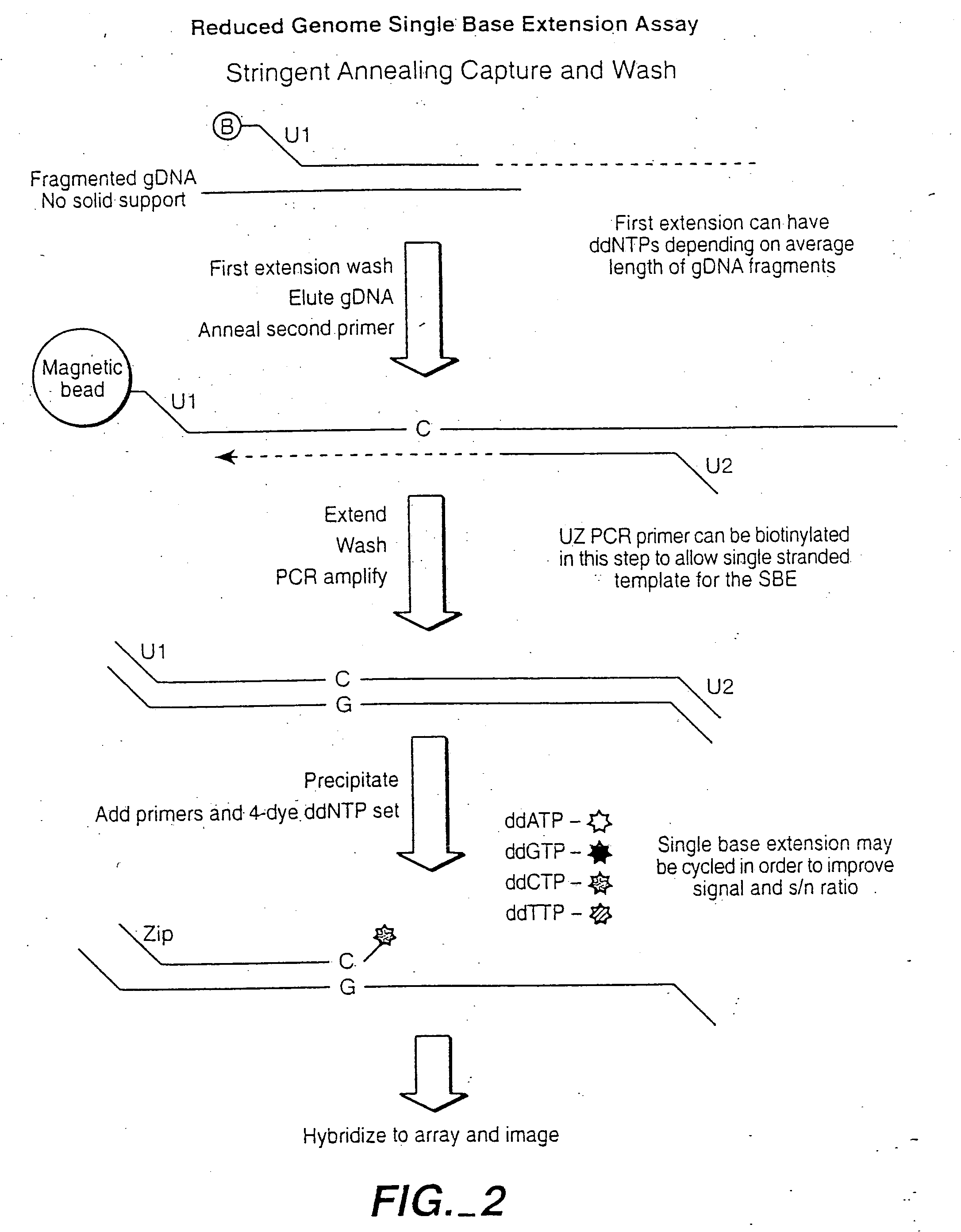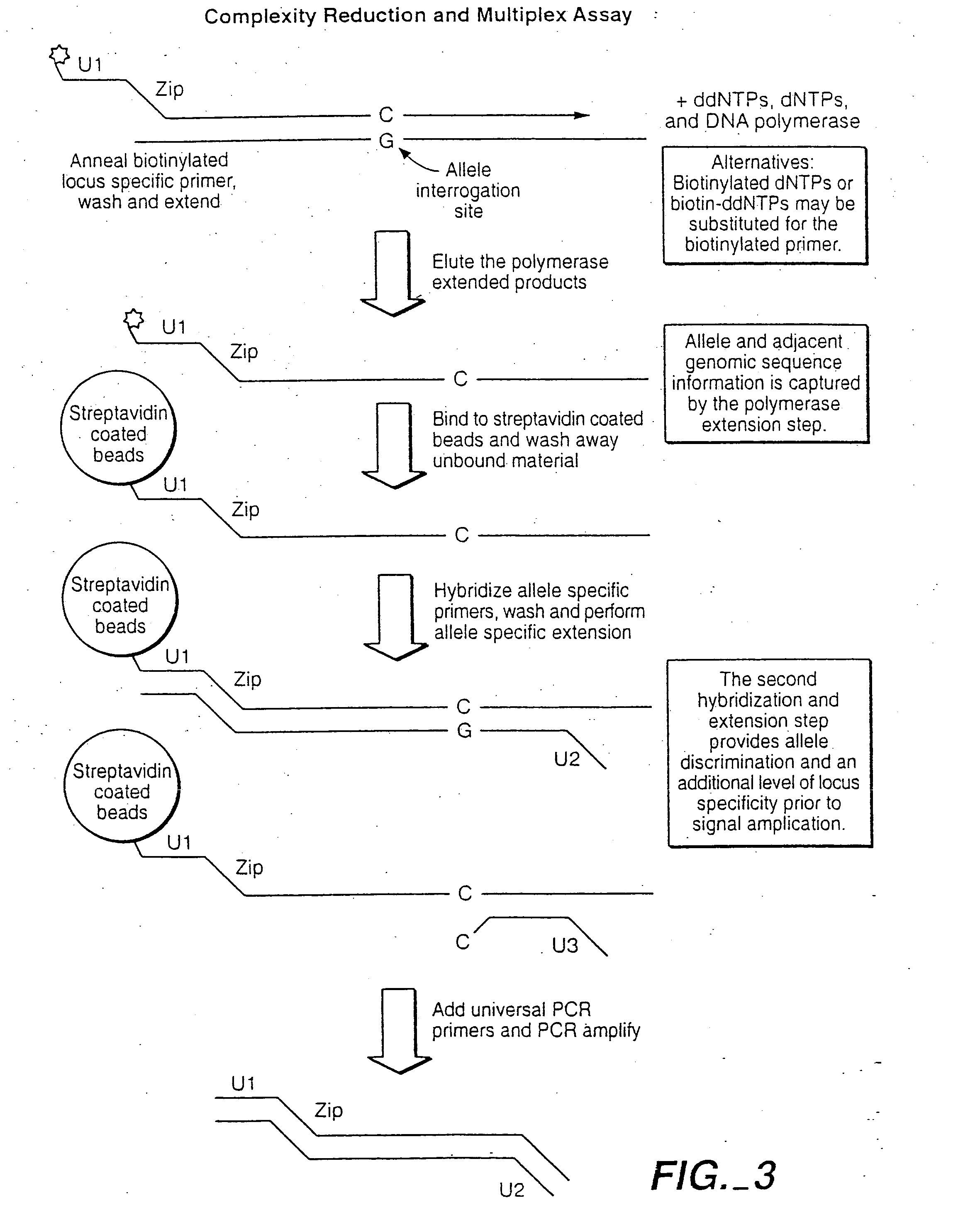Multiplex sample analysis on universal arrays
a sample analysis and multi-sample technology, applied in the field of multi-sample analysis on universal arrays, can solve the problem of high-density chips requiring sample preparation
- Summary
- Abstract
- Description
- Claims
- Application Information
AI Technical Summary
Benefits of technology
Problems solved by technology
Method used
Image
Examples
example i
Target Sequence Detection Assays for Genotyping, Gene Expression, Alternative Spliced Variants and Other DNA or RNA Nucleic Acids
[0496] This example shows the quantitative and qualitative characteristics of detection for DNA and RNA target sequences using the methods of the invention. The methods have a wide range of applicability for genotyping, RNA profiling detection of alternative splicing variants and allele-imbalance detection at the RNA level, for example. Such applications include, for example, drug toxicology studies, neurobiology studies, and studies with laser-capture micro-dissected (LCM) cancer samples.
[0497] The underlying probe configuration characterized corresponds to the oligonucleotide extension-ligation or the OLA configurations where two probes are employed and modified by polymerase extension and ligation or by ligation, respectively. When used in reference to RNA target sequences the oligonucleotide extension-ligation (or extension-ligation) configuration al...
PUM
| Property | Measurement | Unit |
|---|---|---|
| sizes | aaaaa | aaaaa |
| sizes | aaaaa | aaaaa |
| sizes | aaaaa | aaaaa |
Abstract
Description
Claims
Application Information
 Login to View More
Login to View More - R&D
- Intellectual Property
- Life Sciences
- Materials
- Tech Scout
- Unparalleled Data Quality
- Higher Quality Content
- 60% Fewer Hallucinations
Browse by: Latest US Patents, China's latest patents, Technical Efficacy Thesaurus, Application Domain, Technology Topic, Popular Technical Reports.
© 2025 PatSnap. All rights reserved.Legal|Privacy policy|Modern Slavery Act Transparency Statement|Sitemap|About US| Contact US: help@patsnap.com



